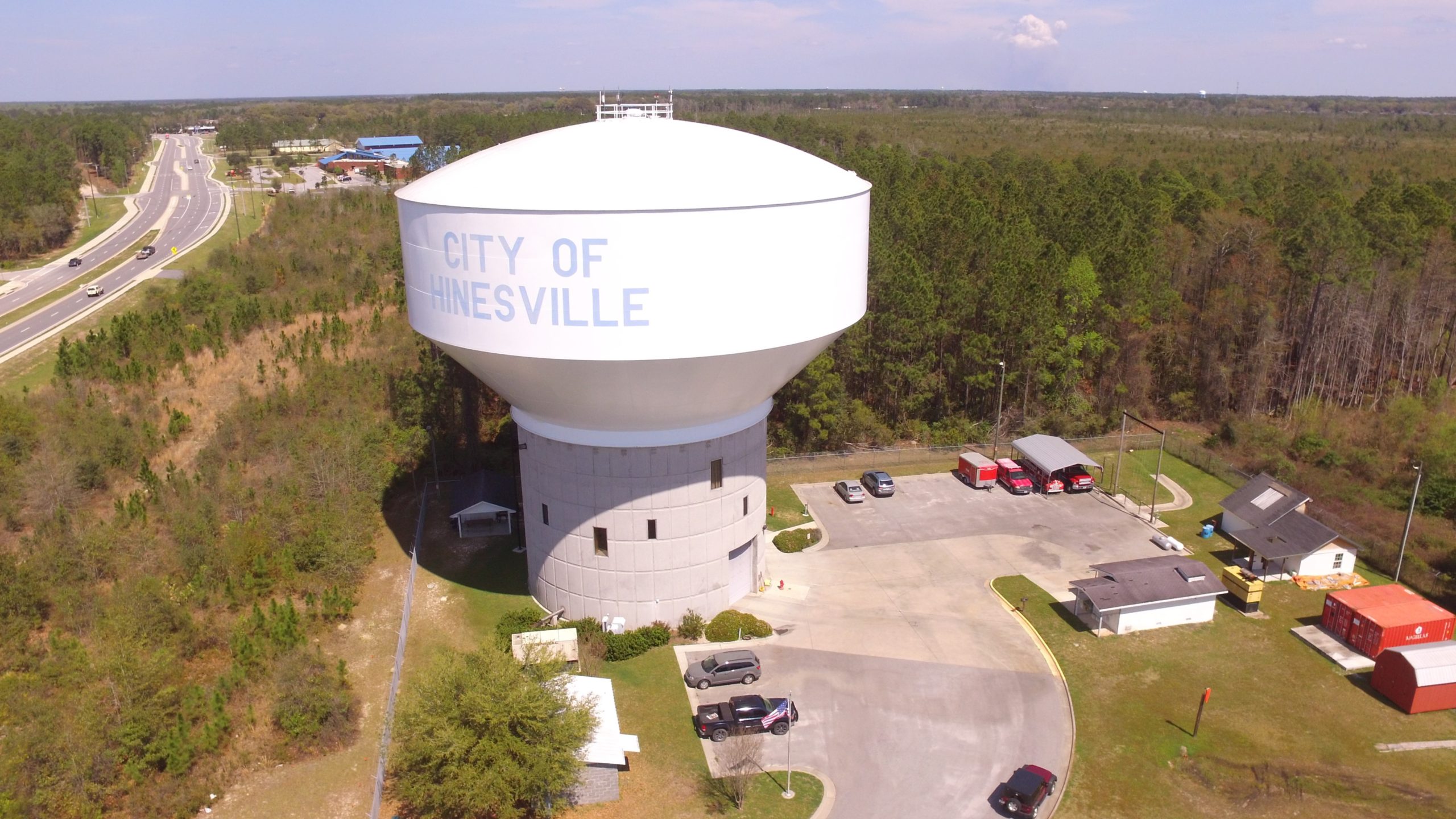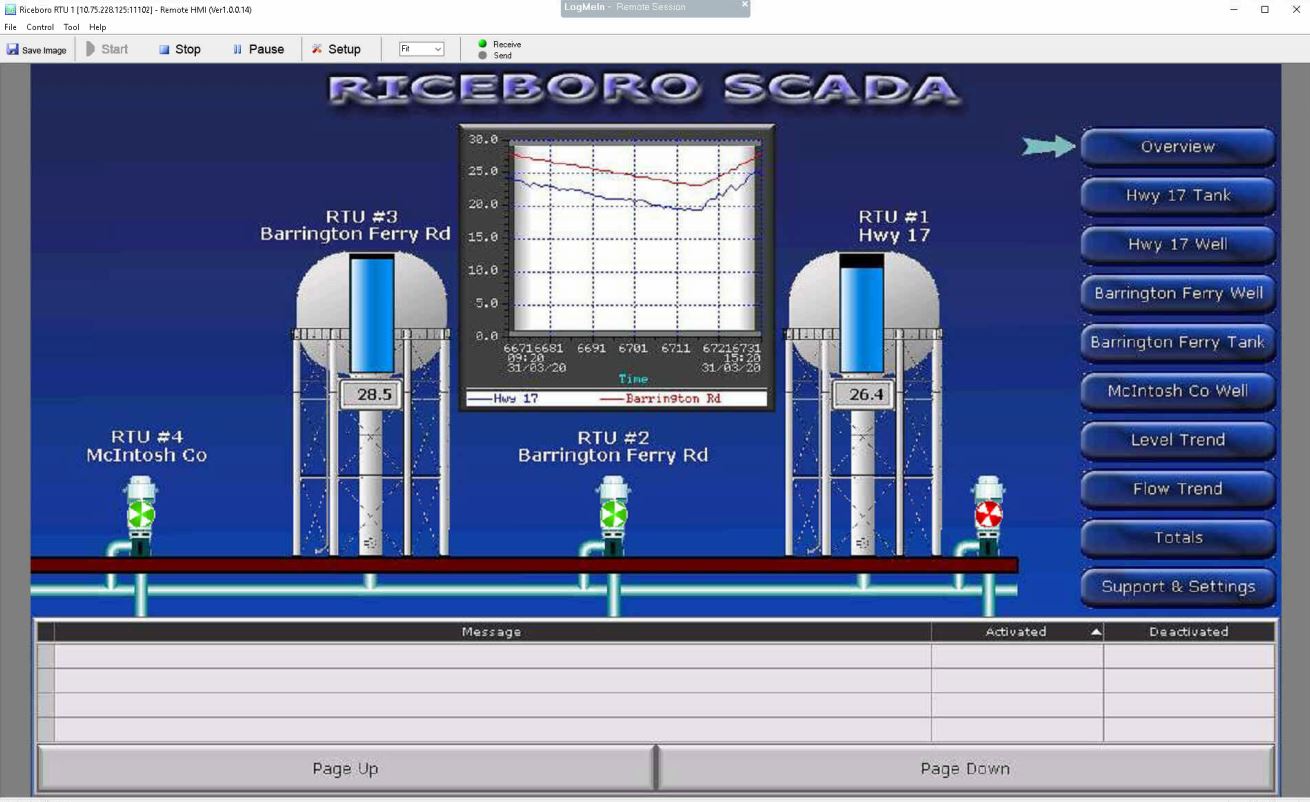Water Supply, Treatment, Storage and Transmission Systems
Water supply, treatment and delivery can be very complicated or very simple depending on the topography, the size of the supply area and quality of the raw water.
- Modeling – Water system design usually begins with hydraulic modeling so that you know the demands and limitations of the system. Once the model is built the proposed improvements can be incorporated into the model to accurately predict the results of the improvements. Simonton Engineering has over 40 years of experience in modeling and designing systems to meet customer demands efficiently.
- Supply – Water supply is very specific to the region in which the demand occurs. Determining whether groundwater or surface water is the supply source on the project is the first step. Current state water wars and saltwater intrusion issues have made this very unpredictable and permitting much more time-consuming. One of our recent projects was expanding the water supply to meet the industrial water demands in Coastal Georgia. Current environmental requirements included evaluating surface water and groundwater as a source. This evaluation included both short and long-term reliability of the source and includes evaluation of regulatory and environmental impacts of the option.
- Storage – Water storage facilities come in many shapes and sizes. Our past experience has included simple multi-legged elevated water storage tanks, hydropillars with fire stations in the base. These tanks range from 150,000 gallons to 2.5 million gallon storage tanks. In addition, our experience includes ground storage tanks or standpipes with high service pumps meeting the needs of the customer base.
- Groundwater Well – Water wells in South Georgia are the preferred source. The water from the Upper Floridan Aquifer is very high-quality water that requires little treatment. Saltwater intrusion in Coastal Georgia and South Carolina has impacted the siting and system design of these water wells. Still, Simonton engineering leads the way with siting water wells in the Green Zone and pumping water back into the areas where new water wells are not permitted.
Case Studies:

Problem: The city of Hinesville undertook a large annexation of the Airport Road area and needed to expand water service to the area. The annexation would require a well tank and extension of watermains to meet the future needs of the annexation.
Solution: The solution was to construct an elevated water storage tank and a new upper Floridan well (just prior to yellow zone implementation). During the process, consideration was given to obtaining a site that could also support a need for establishing a satellite fire station in the area. To meet both of these needs, the city selected a composite hydropillar tank to provide a 2.5 million gallon tank with a concrete shaft to serve as the fire station.

Problem: The City of Riceboro was permitted to withdraw 500,000 gallons per day from the Upper Floridan Aquifer through its two wells. The local industry needed over a million gallons per day to meet their production requirements. As part of the strategy for reducing salt water intrusion in Coastal Georgia, the Georgia Environmental Protection Division policy was to not allow any new wells or expand capacity of existing wells in Liberty County, part of the designated Yellow Zone.
Solution: We utilized an available strategy from the Coastal Water Management Plan to work with other water managers. An adjacent County, McIntosh County, was in a designated Green Zone where new wells are permittable. We contacted the McIntosh County Commission and proposed a plan to drill the well in McIntosh County then pump the water to an elevated water storage tank located in Riceboro. We assisted the city in developing an Intergovernmental Agreement and secured over $5.5 million dollars in grants and low interest loans to fund the well, a 1 million gallon elevated water storage tank and transmission main to supply the system. This increased the capacity of the system from 0.5 million gallons per day to 1.6 million gallons per day. Problem solved.
Problem: The original water system installed in Reynolds at Lake Oconee included 8” or smaller lines and extended for long runs. In addition, the system was fed by a series of wells spread across the site. The addition of the surface treatment plant resulted in abandonment of the multiple wells requiring a transmission/distribution system modification to provide adequate pressure to the new phase of development.
Solution: Simonton Engineering prepared a study building a hydraulic model of the system. The model included existing facilities and predicting future system needs of the future development. This model determined pipe sizes, future tank locations, and performance needs of the system.
Problem: The City of Hinesville was beginning to see development of the city taking on a vertical growth with multi-story buildings both downtown and along 15th Street. The existing water tanks were all built with the same overflow and were limited to the 100 height of the original tanks and could not provide adequate pressure for the multi-story buildings.
Solution: The solution involved multiple solutions. The 15th Street area would employ a booster pump system in the western part of town using the 2.5-million-gallon hydro-pillar as the reservoir. This was an interim solution to meet the immediate need for multi-story apartments in the 15th Street area.
The remaining tanks in the downtown area were evaluated for booster systems or tank raising. It was determined that the best long-term solution was to raise the remaining three tanks by about 40 feet to meet the needs of the downtown area. Once complete, many of the existing booster pump systems were no longer needed and taken out of service.

